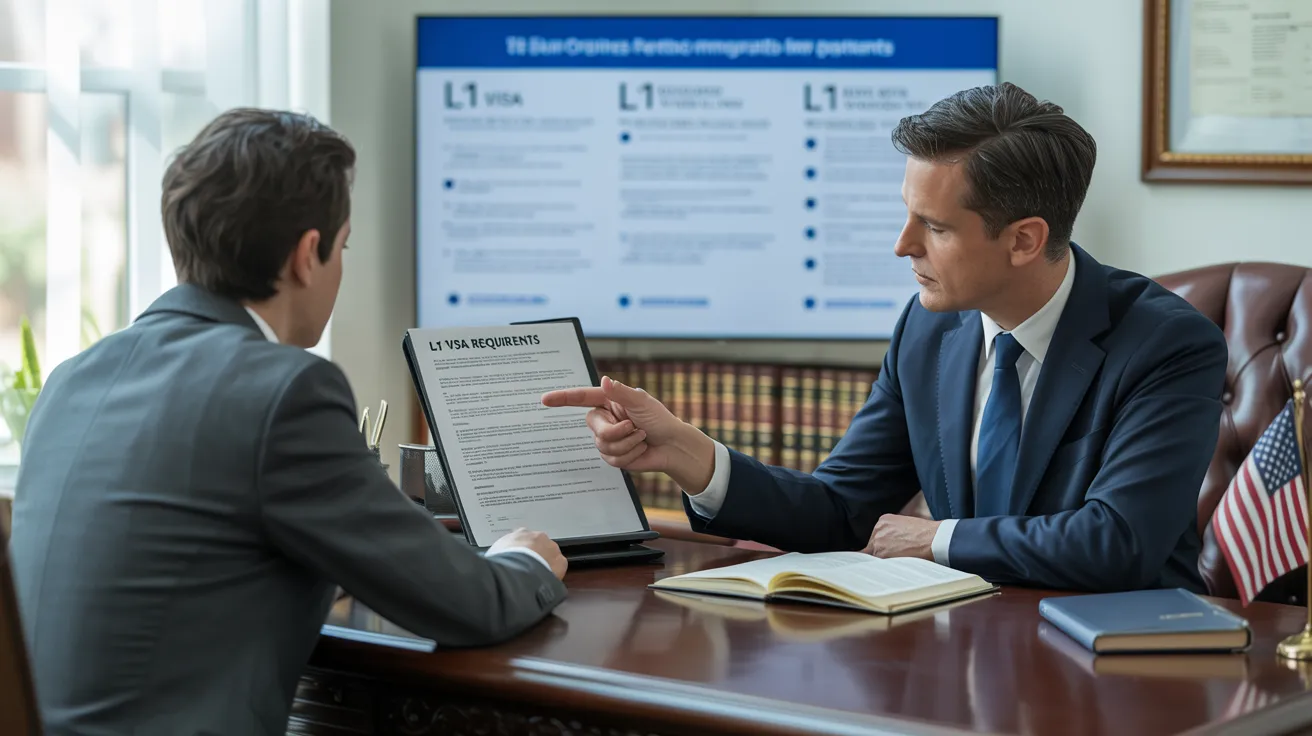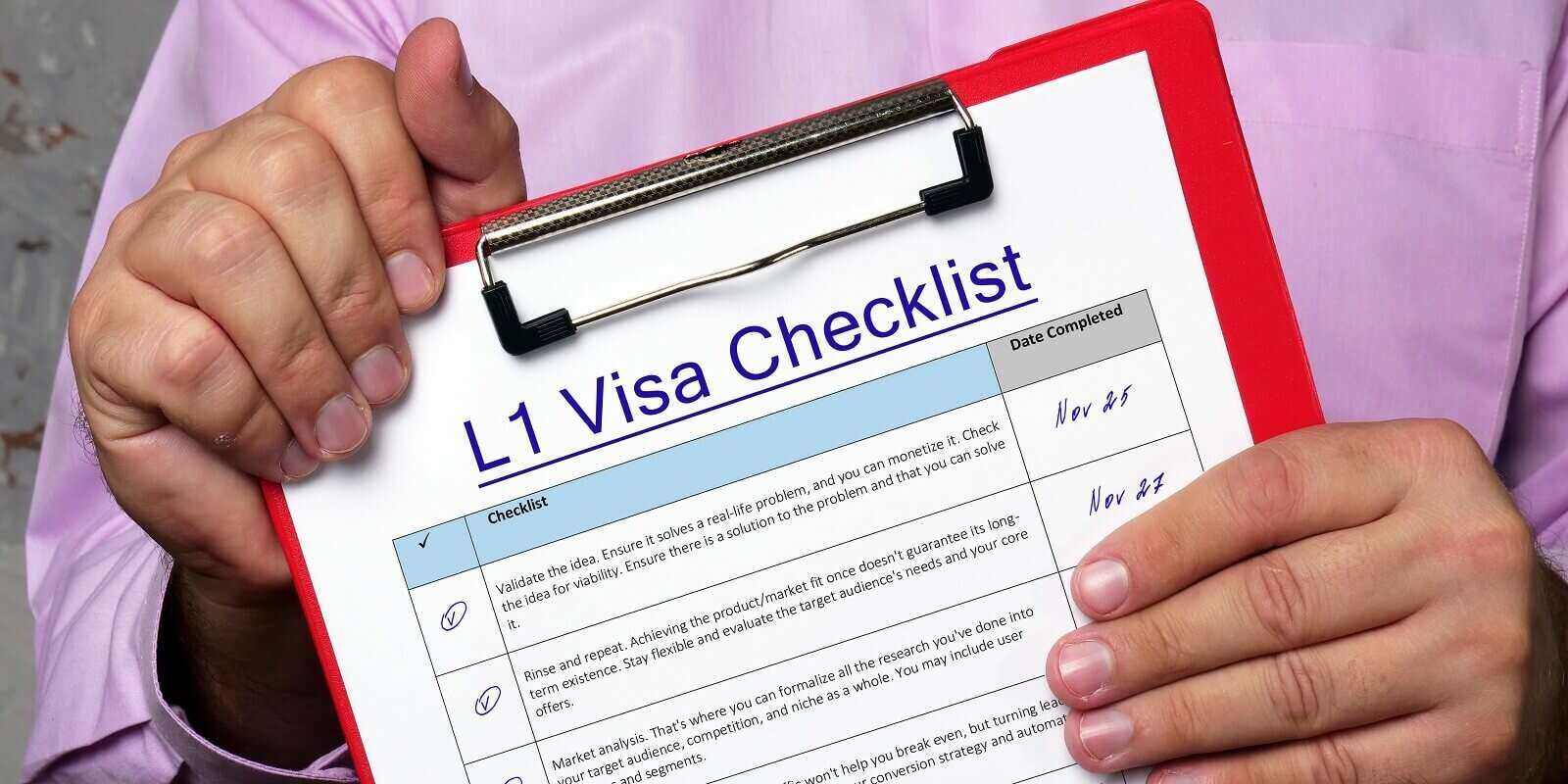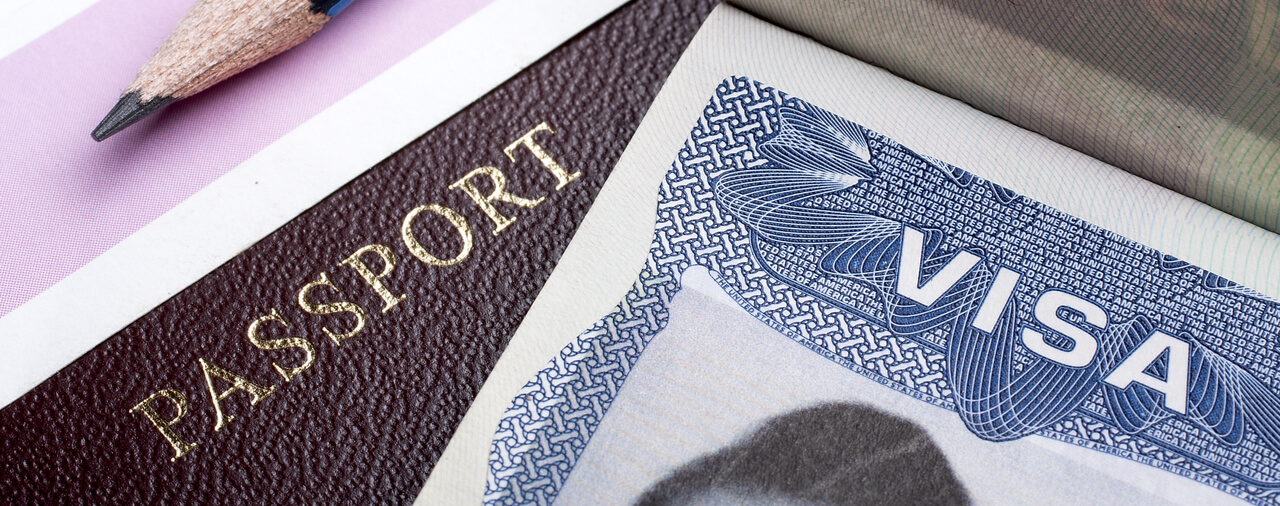Unlocking Opportunities: A Comprehensive Guide to the L1 Visa Process
The L1 visa procedure provides a crucial pathway for international firms looking for to move crucial staff members throughout boundaries. Recognizing the nuances of eligibility criteria, the distinctions between L-1A and L-1B visas, and the ins and outs of the application process can considerably influence an applicant's success. Steering this complicated landscape is not without its challenges, and cautious interest to documentation and company sponsorship is essential. As we explore the key components of this procedure, the approaches for conquering potential obstacles will come to be noticeable, disclosing just how notified preparation can open up a globe of chances.
Understanding the L1 Visa
Comprehending the L1 visa entails identifying its relevance as an important device for multinational firms seeking to move knowledgeable employees between worldwide offices. This non-immigrant visa classification promotes the movement of executives, managers, and specialized understanding employees to the United States, therefore allowing companies to preserve functional connection and harness global talent successfully. The L1 visa is separated right into two main categories: L-1A for supervisors and executives, and L-1B for workers having specialized knowledge.The L1 visa offers a critical function in boosting a firm's affordable side in the worldwide industry. By permitting companies to relocate their essential workers, businesses can ensure that essential projects are managed by qualified individuals who are already aware of the company's society and operational procedures. L1 copyright copyright. This internal transfer system not only fosters expertise sharing but also advertises development and cooperation across borders.Moreover, the L1 visa is commonly preferred for its reasonably simple application procedure compared to other visa classifications, as it enables double intent, permitting holders to go after permanent residency while on a short-lived job visa. This function makes the L1 visa specifically appealing for both companies and workers, as it improves the pathway for knowledgeable experts to establish lasting residency in the United States
Qualification Standards
Qualification for the L1 visa hinges on several key criteria that assure both the employee and the company meet particular credentials. This non-immigrant visa is designed for multinational companies to transfer staff members from consular services to united state counterparts.Firstly, the employer needs to be a qualifying company, that includes a parent business, branch, affiliate, or subsidiary of a united state service. The firm must have been doing company for at least one year both in the united state and abroad. This guarantees that the business has sufficient operational stability and a legit presence.Secondly, the employee should hold a managerial, executive, or specialized understanding setting. For L1A visas, the candidate needs to show managerial or executive credentials, while L1B visas focus on specialized expertise associated to the company's items, solutions, or processes. Additionally, the staff member needs to have helped the foreign entity for at the very least one constant year within the last three years prior to their application.Lastly, the worker's duty in the united state should line up with their previous position, making sure that their skills and competence are leveraged for the firm's advantage.

Sorts Of L1 Visas
The L1 visa category consists of two key types made to assist in the transfer of workers within multinational business: the L1A visa for managers and execs, and the L1B visa for staff members with specialized expertise. Each kind offers distinct functions and has specific eligibility criteria.The L1A visa is tailored for individuals who hold managerial or executive positions within a firm. This visa makes it possible for top-level employees to transfer to a united state branch, subsidiary, or affiliate of the very same company. Candidates for the L1A visa should show that they have actually been utilized in a supervisory or executive capacity for a minimum of one constant year within the previous three years prior to their application. Furthermore, this visa provides a much longer duration of keep, at first granted for 3 years, with the possibility of expansions for approximately 7 years.In contrast, the L1B visa is meant for professionals with specialized knowledge pertaining to the business's items, services, or procedures. To certify, applicants should show that their expertise is important to the organization and that they have benefited a minimum of one constant year within the last three years in a function that needed this specialized expertise. The L1B visa is originally approved for 3 years, with extensions offered for up to five years.Both visa types are vital for firms looking for to enhance their international operations by leveraging proficient personnel, thus promoting development and effectiveness within the united state market.
Application Process
Steering through the L1 copyright process involves several vital steps that must be thoroughly followed to assure an effective result. The process begins with the united state company, who should first develop qualification by demonstrating a qualifying partnership with the international entity and verifying that the worker fulfills the particular needs for the L1 visa category being sought.Once eligibility is validated, the employer initiates the process by filing Kind I-129, the Application for a Nonimmigrant Worker, with the U.S. Citizenship and Immigration Solutions (USCIS) This type needs to be gone along with by a detailed description of the work responsibilities to be performed, the organizational framework of both the united state and foreign entities, and the staff member's certifications. It's vital to confirm that all details is exact and full, as omissions or mistakes can cause delays or denials.Upon approval of the I-129 application, the following action entails the worker requesting the L1 visa at an U.S. consular office or consulate in their home country. This stage requires the completion of Kind DS-160, the Online Nonimmigrant copyright, and setting up a meeting. During the meeting, the candidate has to offer proof supporting their certifications and the employer's petition.After the visa is given, the employee can get in the United States to function in the assigned role. On the whole, cautious prep work and adherence to every step of the application process are vital for an effective L1 visa end result.
Called for Documentation

Important Forms Needed
Maneuvering the L1 Visa process requires careful attention to the important kinds and paperwork required for an effective application. The primary form needed is the Type I-129, Petition for a Nonimmigrant Employee, which need to be finished and sent by the united state employer (L1 Visa Requirements). This kind outlines the information of the employment offer and the qualifications of the employee seeking the L1 Visa.Alongside Form I-129, the applicant will need to total Type I-539 if coming with household members are also making an application for visas. In addition, the company must provide evidence of the qualifying partnership in between the united state entity and the international entity, typically demanding the submission of company files such as short articles of unification or financial statements.Moreover, it is crucial to include the L Category Supplement to Form I-129, which specifies the kind of L Visa being requested-- either L-1A for managers and execs or L-1B for workers with specialized expertise. Finally, applicants should guarantee that all forms are signed and dated appropriately, as insufficient entries can cause delays or denials. Appropriately assembling these essential types lays the structure for a smoother L1 copyright procedure
Sustaining Evidence Needs
Supporting paperwork is vital for an effective L1 copyright, as it validates the cases made in the application. Candidates must offer a variety of documents to show qualification for the visa, which is classified into 2 key types: evidence of the qualifying connection in between the united state and foreign entities and evidence of the candidate's qualifications.To establish the connection, candidates need to submit paperwork such as company business graphes, monetary statements, and proof of possession. These files confirm that the international business has a certifying partnership with the U.S. employer, whether as a parent business, subsidiary, branch, or affiliate.For the applicant's qualifications, essential records include a detailed employment letter from the foreign employer, describing the candidate's work title, obligations, and duration of employment. In addition, academic qualifications, such as degrees and diplomas, need to be supplied to verify the candidate's experience in the appropriate field.
Company Sponsorship Documents
Company sponsorship files play a necessary function in the L1 copyright procedure, as they confirm the U.S. company's dedication to the candidate's work in the USA. These documents are vital for showing the employer's qualification to fund the candidate for the L1 Visa.Key papers generally required include a comprehensive work letter from the united state employer, which details the job title, obligations, and the nature of the employment relationship. Additionally, the employer needs to give proof of the business's authenticity, such as organization licenses, income tax return, and business graphes, illustrating the relationship between the U.S. entity and the foreign company.Furthermore, evidence of the worker's qualifying partnership with the foreign business is required. This may include documents showing the staff member's role in the international entity, such as pay stubs, employment agreement, or efficiency examinations.
Typical Difficulties
Navigating the L1 visa procedure presents several usual challenges that applicants ought to know (L1 Visa Qualifications). Key concerns usually include rigorous documents requirements, possible hold-ups in processing times, and the requirement for stringent lawful compliance. Recognizing these challenges can assist candidates better prepare and reduce threats throughout their copyright journey
Documentation Demands
The L1 copyright process commonly provides significant difficulties related to paperwork needs. Applicants have to supply substantial paperwork to establish qualification, which can cause confusion and prospective hold-ups. Secret documents consist of evidence of a certifying partnership between the U.S. and international company, evidence of the candidate's work history, and thorough information regarding the work duty in the U.S.One typical challenge is gathering sufficient proof to demonstrate the nature of the qualifying relationship. Firms often battle to existing clear organizational graphes or economic statements that show the connection in between the entities. Furthermore, ensuring that letters of support from companies properly reflect the applicant's job tasks and credentials is important, as unclear summaries can result in denials.Another issue occurs from the need for detailed work descriptions that straighten with the L1 visa groups. Candidates should articulate not only their current duty yet additionally their supervisory or specialized knowledge obligations plainly. This demands a complete understanding of both the applicant's setting and the governing language utilized in L1 applications.
Processing Time Delays
Experiencing delays in processing times is an usual obstacle faced by L1 visa candidates, usually causing aggravation and unpredictability. Several factors contribute to these delays, including high application quantities, boosted analysis of applications, and management stockpiles within the united state Citizenship and Immigration Services (USCIS) Applicants might locate that handling times can differ considerably depending upon the solution center managing their application, as each center has its very own workload and efficiency levels. Furthermore, the intricacy of the applicant's case, such as the demand for considerable paperwork or information, can better prolong wait times.In some instances, problems connected to the applicant's present immigration status or previous visa background may additionally result in added hold-ups, as USCIS may call for further testimonial or details. It is vital for candidates to continue to be proactive during this duration, keeping open communication with their companies and legal reps to attend to any type of prospective problems promptly.Understanding these handling time difficulties can aid L1 visa candidates get ready for possible delays and mitigate the impact on their change and profession strategies. Perseverance and persistance are vital virtues in steering this L1 Visa Qualifications elaborate process.
Lawful Compliance Issues
Lots of L1 visa candidates run into lawful conformity problems that can complicate their journey towards acquiring the visa. Comprehending and sticking to the particular guidelines set by the U.S. Citizenship and Immigration Services (USCIS) is vital. Usual difficulties consist of demonstrating the qualifying partnership between the foreign and united state employers, along with confirming that the candidate possesses the requisite specific expertise or managerial capacity.Additionally, applicants should give detailed documentation outlining their task obligations, company framework, and financial viability of the united state entity. Poor or incorrect paperwork can bring about delays or perhaps denials. Employers must likewise ensure that they adhere to labor legislations, including wage and functioning problem standards, which can impact visa eligibility.Another typical problem includes maintaining compliance with the terms of the visa when granted. Modifications in employment standing, job obligations, or firm structure can necessitate changes to the visa, which if not addressed immediately can lead to legal problems. Because of this, staying notified concerning conformity requirements and seeking legal advise when necessary is vital to navigate the complexities of the L1 visa process efficiently.
Tips for Success
Success in the L1 copyright procedure usually pivots on meticulous prep work and focus to information. To boost your possibilities of authorization, begin by extensively understanding the eligibility needs for both the L1A and L1B visa categories. Review whether your setting at the business certifies as supervisory, executive, or specialized knowledge, as this classification significantly affects your application.Next, gather comprehensive paperwork that confirms your claims. This consists of business graphes, thorough task descriptions, and evidence of the company's functional structure. Clear and succinct proof of the qualifying connection between the united state entity and the foreign entity is crucial. Verify that all records are organized logically and provided in a professional fashion, as this mirrors your dedication and seriousness about the application.Engage the solutions of a seasoned migration lawyer who focuses on L1 visas. Their know-how can prove very useful, leading you via facility guidelines and ensuring that all paperwork adheres to existing regulations. In addition, plan for the interview by practicing solution to typical inquiries and preparing to review your duty and payments to the company comprehensive.
Frequently Asked Questions
Can Family Members Members Accompany the L1 Visa Holder?
Yes, relative of L1 visa owners, including spouses and unmarried youngsters under 21, can come with the key visa owner. They may additionally use for L2 visas, which permit them to live in the United States.
For How Long Can I Stay on an L1 Visa?
The L1 visa enables initial keeps of up to 3 years, with the possibility of extension. L1A visa holders might remain for a maximum of 7 years, while L1B visa owners can remain for 5 years.
Can L1 Visa Owners Make An Application For an Eco-friendly Card?
Yes, L1 visa holders can make an application for an environment-friendly card. They may seek irreversible residency via employment-based groups, usually calling for sponsorship from their company, given they satisfy the needed qualifications and documentation needs.
What Takes place if My L1 copyright Is Denied?
If your L1 copyright is rejected, you may get a notice detailing the reasons for denial. You can seek to appeal the choice, reapply, or explore alternate visa choices based on your circumstances.
Exist Any Kind Of Traveling Restrictions With an L1 Visa?
An L1 visa generally allows for international traveling; nonetheless, re-entry to the united state rests upon maintaining valid condition. Vacationers must assure compliance with visa problems to prevent complications upon return
Verdict
